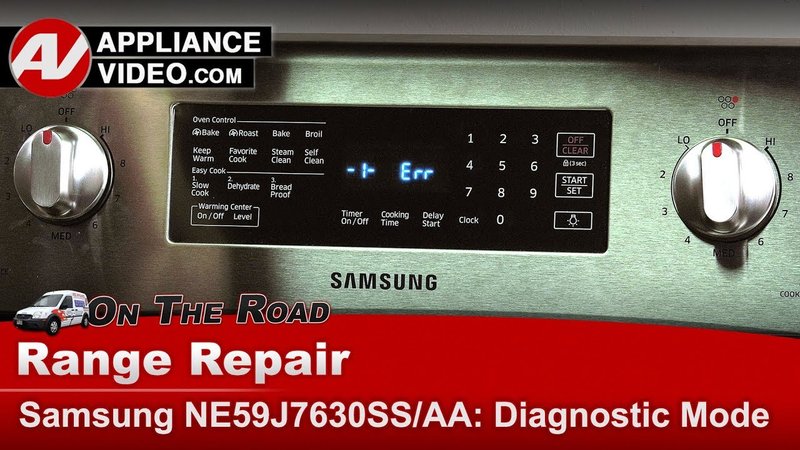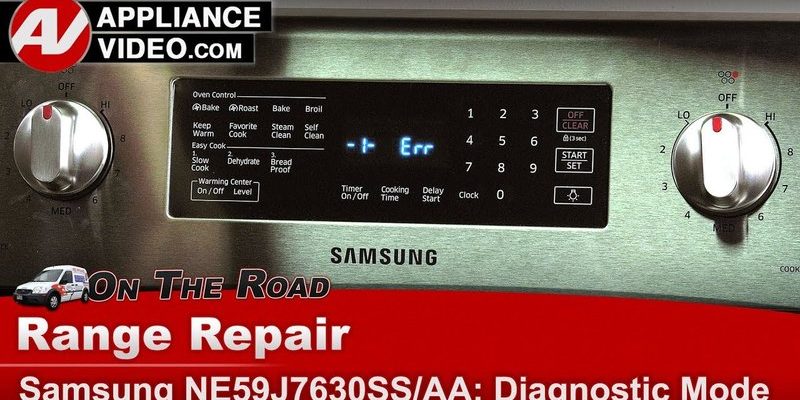
Imagine your oven as a finely tuned orchestra. Each instrument, or component in this case, needs to work in harmony to produce the perfect culinary symphony. When one piece, like the oven sensor, goes awry, it throws the entire system off balance. So, let’s dive into what this error is, why it occurs, and how you can be the conductor that keeps your kitchen running smoothly.
Understanding Samsung Oven Error Code Oe
So, what’s the deal with Error Code Oe? When your Samsung oven or range displays this code, it’s a signal that there’s an issue with the oven’s internal temperature sensor. Think of this sensor as the thermostat in your home. It measures how hot the oven is and ensures that it maintains the right temperature. If it’s not working correctly, the oven might not heat up enough, or it could overheat, both of which can spoil your cooking plans.
Why does this error occur in the first place? Several factors could be at play. Over time, the temperature sensor can wear out from regular use, much like how a pair of shoes eventually needs replacing after miles of walking. Additionally, electrical issues such as a loose connection or a broken wire can cause the sensor to send incorrect readings. Environmental factors like excessive humidity or dust accumulation can also interfere with sensor functionality.
Given how integral this component is to your oven’s operation, preventing Error Code Oe is crucial for maintaining your appliance’s health. We’ll look into some practical strategies to ensure your temperature sensor stays in tip-top shape. But first, it’s helpful to know what triggers this issue so you can tackle the root cause.
Common Causes of Error Code Oe
You might be wondering, “What exactly causes these sensor issues?” One common culprit is a *failing temperature sensor*. Like any electronic part, it doesn’t last forever. Over time, its ability to accurately measure temperature diminishes, similar to how an aging thermometer might need recalibration.
Loose or faulty wiring is another frequent cause. Just as a loose wire in a string of holiday lights can make them flicker, a poor connection to the temperature sensor can lead to erratic readings. These wiring issues can stem from normal wear and tear, or even incorrect installation.
Environmental conditions can also play a role. If your kitchen is particularly humid, moisture can seep into your oven’s components, leading to corrosion or short circuits. Similarly, dust and grime build-up can obstruct proper sensor function. It’s like trying to read a thermometer that’s been left out in a sandstorm – not very accurate!
Given these potential causes, inspecting and maintaining your oven and its components is essential. You’ll want to regularly check for signs of wear or damage and address them before they escalate into more serious problems.
Practical Steps to Prevent Future Occurrences
Here’s the good news: preventing Error Code Oe isn’t as daunting as it might seem. Start by frequently inspecting your oven’s temperature sensor and wiring. This can be as simple as visually checking for any obvious signs of damage or corrosion. If you’re unsure, consider seeking help from a professional technician to assess the situation.
Regular cleaning plays a critical part, too. Ensure that your oven’s interior and exterior remain free from dust and grime. You wouldn’t let your car’s engine get clogged with dirt, right? The same applies to your oven. Keeping it clean helps maintain optimal performance and extends its lifespan.
Finally, consider investing in a surge protector for your oven. This might sound like overkill, but think of it as a safety net. It protects your appliance from unexpected power surges that can damage the sensor’s electronics. Just like how a helmet protects you while biking, a surge protector safeguards your oven from harmful voltage spikes.
Maintaining Your Samsung Oven for Optimal Performance
To ensure your Samsung oven continues to function smoothly, develop a routine maintenance schedule. Just like regular car check-ups keep your vehicle running, periodic maintenance prevents unexpected glitches like Error Code Oe.
Start by routinely monitoring your oven’s performance. Pay attention to any unusual behaviors, such as longer preheat times or inconsistent cooking results. These might be subtle cues that your oven needs some attention.
It’s also wise to document any repairs or parts replacements. Keeping a record of your oven’s maintenance history can be invaluable if issues arise. It helps technicians diagnose problems more effectively, much like how a medical history aids doctors in providing the best care.
Finally, stay informed about updates or recalls for your oven model. Manufacturers often release software updates or issue recalls to fix known issues. Make sure your appliance is up-to-date and complies with the latest safety standards.
Taking these preventive measures can save you time and headache down the road. By investing a little time and effort into maintaining your oven, you’re setting yourself up for stress-free cooking experiences.
You might be feeling more confident now, equipped with the knowledge to prevent Error Code Oe on your Samsung oven in the future. By understanding the role of the temperature sensor, identifying common causes, and implementing some straightforward maintenance practices, you can keep your kitchen running smoothly.
Remember, your oven is an essential part of your home. Just like any other appliance, it thrives on regular care and attention. By taking the time to inspect, clean, and maintain it, you’re not just preventing errors—you’re ensuring that your culinary adventures go off without a hitch.
So go ahead, fire up that oven with peace of mind. With these tips in your back pocket, you’ll be better prepared to handle any issues that come your way, allowing you to focus on what truly matters: creating delicious meals for you and your loved ones.
